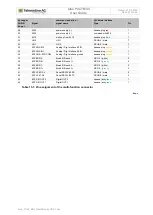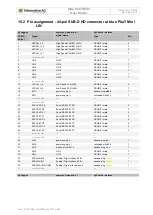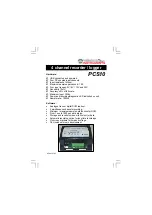
blue PiraT Mini
User Guide
Datum: 21.09.2016
Seite 33 von 56
blue_PiraT_Mini_UserManual_V2.4.1.doc
11 Interfaces
The different interfaces of the blue PiraT Mini supported bus systems are described in this chap-
ter in more detail.
11.1 CAN
The blue PiraT Mini is able to record data in compliance with the CAN specification 2.0a (11 Bit
identifier) and 2.0b (29 Bit identifier).
11.1.1
High Speed and Low Speed operating modes
Depending on the model, the blue PiraT Mini has different numbers of High Speed (HS) and
Low Speed (LS) CAN interfaces. It is not possible to change a CAN interface from Low to High
Speed or vice versa. Each type is using different transceivers.
The electrical behavior of the Low Speed and the High Speed CAN is different, hence, the Low
Speed CAN port of the blue PiraT Mini must not be connected to a High Speed CAN bus and
vice versa.
Both operating modes use differential signals (CANH, CANL). For the correct data recording, all
nodes of the bus must have a common reference potential. The blue PiraT Mini uses the con-
nection
“
clamp 31
” as a reference potential. The lines of the High Speed CANs are terminated
with a high resistance.
Low Speed CAN
High Speed CAN
Transceiver chip
Philips TJA1055
Philips TJA1041
Terminating resistor
12k
2k6
Baud rate
50 kbit/s - 125 kbit/s
50 kbit/s - 1 Mbit/s
Supported identifiers (SW)
11 and 29 Bit
11 and 29 Bit
Disabling acknowledge
possible
possible
Time stamps
at the end of the telegram
at the end of the telegram
Table 11.1: CAN
11.1.2
CAN data with 29 Bit identifiers
The blue PiraT Mini
can also log CAN data with 29 Bit identifiers. You don’t have to configure
anything. All the CAN data will be logged as they are available on the CAN bus. It is also possi-
ble to log CAN messages mixed with 11 Bit and 29 Bit identifiers.
















































